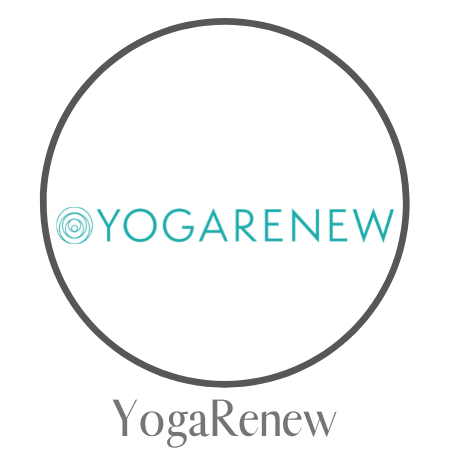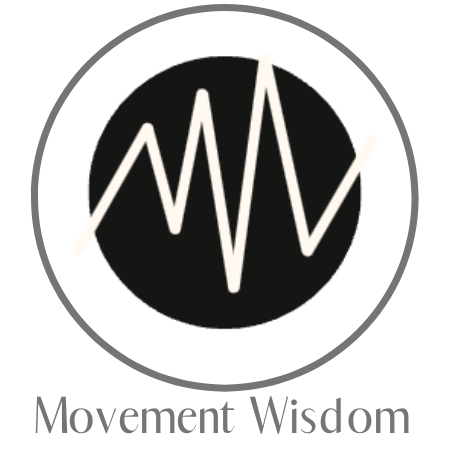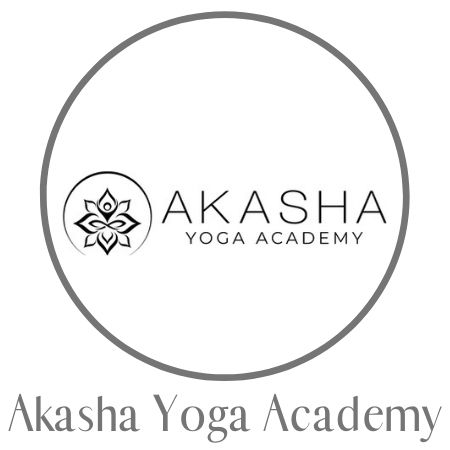Sure, toned abs look nice, but the benefits of a strong core go well beyond the aesthetics. In yoga, a strong core helps improve your posture, balance, breathing, and much more. Read on to learn the twelve best yoga for abs poses and my two favorite asanas for losing that annoying excess belly fat.
Incorporating core-strengthening poses in your yoga routine is essential for building a solid foundation AND progressing in your practice. But which yoga poses will help you get a trim tummy? Let’s find out!
Article content:

ARE YOU CURIOUS ABOUT YOGA TEACHER TRAINING?!
Online Yoga Teacher Training Offers
- Affordability
- Flexibility
- Certification
- Lifetime access
⬇Click below to discover the best Yoga Alliance registered online YTT's that are under $500⬇
Why core strength is important in yoga
When you think of the core, you likely think about the “six-pack” abs. However, our core consists of a wide range of muscles surrounding the front, back, and sides of the spine. The primary purpose of the core is to provide stability to the spine, facilitate movement, and aid in balance. In yoga, strengthening our core is essential for many reasons, including:
- Injury prevention – Yoga poses that stretch and twist the mid-section can apply stress on the spine and surrounding muscles. Thus, a strong core helps you maintain a safe, controlled range of motion, reducing the chance of injury.
- Stability & alignment – A strong core helps you engage the correct muscles and reduces unnecessary strain on other body parts.
- Improved breathing – The diaphragm is part of the core, so strengthening this body part improves breathing and supports other organs in the abdominal cavity.
- Deepening your practice – Strengthening your core enables you to explore advanced postures like arm balances and inversions with greater ease and stability.
12 best yoga poses to strengthen your abs
If you're new to yoga or have never done core exercises, start with the following twelve yoga poses for ab strength:
- Plank pose
- Balancing table pose
- Superman pose
- Upward plank pose
- Seated spinal twist
- Boat pose
- Chaturanga Dandasana
- Side plank
- Dolphin pose
- Floating triangle
- Warrior 3
- Chair pose
1. Plank pose
Plank pose is undoubtedly one of the best asanas for building core strength. It's also one of the easiest postures to include in your yoga routine if you practice dynamic styles like vinyasa and Ashtanga. Here’s how to do Plank Pose:
- Start in a tabletop position with your shoulders directly over your wrists.
- Spread your fingers and distribute the weight evenly by pressing into all four corners of the hands.
- Extend both legs behind you. Then tuck your tailbone and draw your navel to your spine to maintain an engaged core. Keep the hips in line with the body.
- Hold for five to ten breaths

2. Balancing table pose
Balancing table pose is THE best prep asana for building ab strength and preparing for more challenging core-focused postures like plank and forearm plank. This is because one knee always remains on the ground, so you do not have to lift your entire body weight. It is also excellent for building balance, coordination, and focus. Here's how to do Balancing table pose:
- Start in a tabletop position with hips over knees and shoulders over wrists.
- Engage your core, then slowly extend your right leg back into a straight 90-degree angle. Flex the foot to engage the leg muscles and press the heel back.
- Shift your weight into your right hand as you lift and reach your left arm forward.
- Ensure your spine is neutral as you hold for five breaths. Release and repeat on the other side.
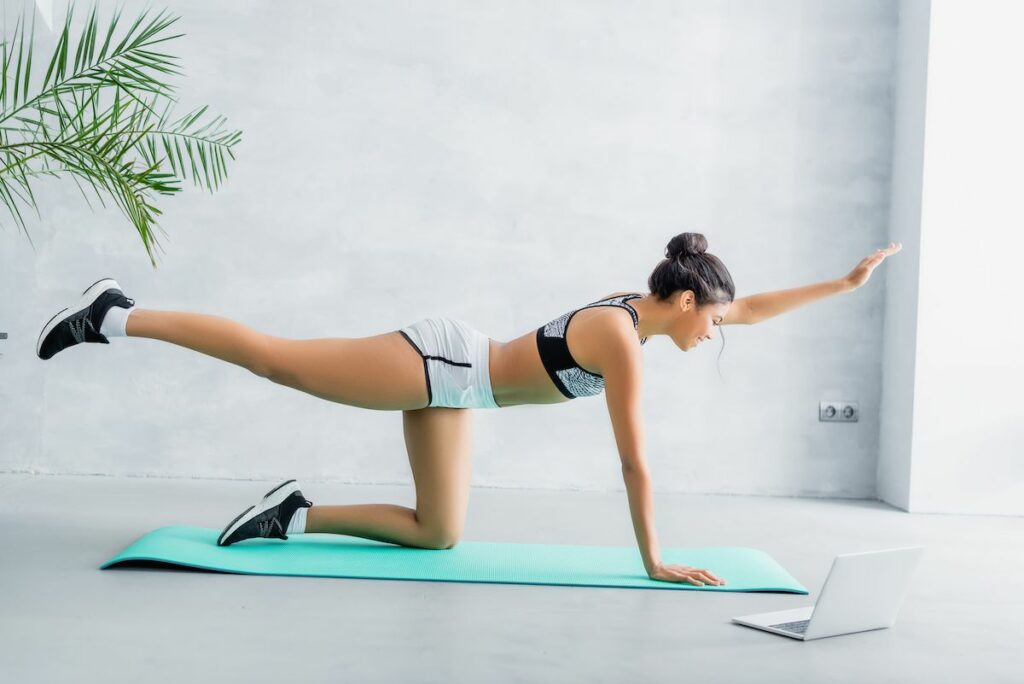
3. Superman pose
The Superman pose enhances spinal flexibility and core stability by strengthening the central abdominal muscles and the erector spinae muscles in the back. Strengthening these muscles improves posture and spinal health while toning the core region. Here's how to do Superman pose:
- Lay on your front with your arms and legs extended.
- Engage your abs, and lift your arms, chest, and legs off the ground on an exhale.
- Keep your arms and legs straight as you lift them as high as possible.
- Hold for five breaths.

4. Upward plank pose
The Upward plank is the reverse position of the plank pose, strengthening the back and hamstrings while stretching the chest, abdomen, and quads. While Plank strengthens the core muscles, Upward Plank stretches them.Here’s how to do Upward Plank Pose:
- From a seated position with your legs extended, bring your hands behind your back, fingers facing your body.
- Press your palms firmly into the ground to engage your shoulders.
- On an inhale, lift your hips, bringing them in line with your body. Keep the core engaged by tucking the tailbone under and sucking the belly in.
- Traditionally, the legs should be extended with the feet pressing down and the toes pointing away. However, if this is too challenging, do the modified variation by keeping the knees bent.

5. Seated spinal twist
Seated spinal twist (Ardha Matsyendrasana) is one of the most gentle yet equally effective core-focused yoga poses. It tones the belly by compressing the abdominal muscles and organs, which also helps to stimulate digestion and boost metabolism. Here's how to do Seated spinal twist:
- From a seated position with the legs extended, bend your right knee, placing the foot on the outside of the left knee.
- Bring your right hand behind the mat, inhale to lengthen the spine, and reach your left arm up.
- On the exhale, turn your torso to the right as you bend your elbow, hooking it to the outside of the right knee.
- Take five breaths here. On each exhale, gently press the elbow into the knee to deepen the twist further. Then release and twist to the left side.

6. Boat pose
Boat pose is incredibly strengthening for the core muscles, hip flexors, adductors, and quads. But along with improving strength, it also enhances general core stability. This helps you hold standing and balance poses for longer. Here’s how to do Boat pose:
- From a seated position, bend your knees, placing the soles of the feet on the ground.
- Bring your hands to the back of your thighs. Engage your core by tucking your tailbone under and sucking the belly button in (ensure the spine is straight).
- Lift one foot off the ground, followed by the other, bringing the shins parallel to the ground. If this is enough stay here and hold for 5 breaths.
- To practice the full variation of the boat pose, extend the legs, pointing the toes up, then extend the arms by your sides. The spine should be straight so your upper and lower body forms a V shape.
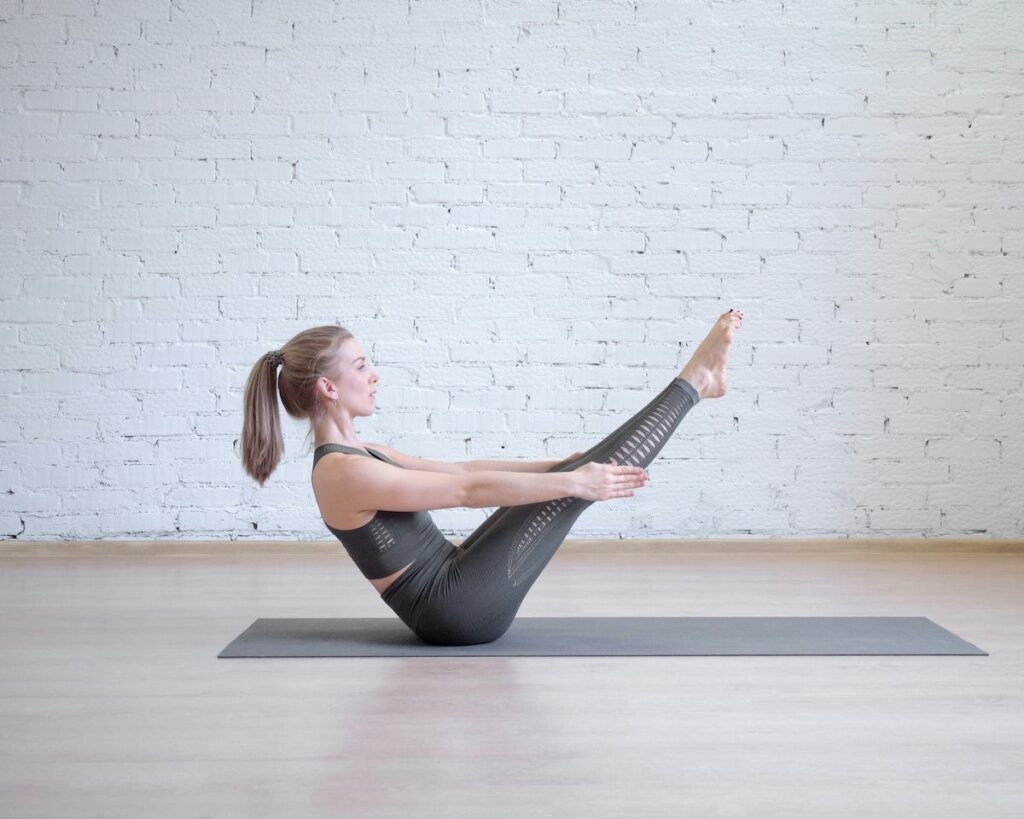
⬇Yoga Alliance registered yoga teacher trainings you should look into⬇
7. Chaturanga dandasana
Chaturanga dandasana (four-limbed staff pose) is found in the sun salutation sequence and involves lowering halfway to the floor from a plank position. What makes it so challenging is that you must hold your weight off the floor before moving into an upward-facing dog pose. Here's how to do Chaturanga dandasana:
- Hug your elbows into your ribs as you lower down, don't let them flare out to the sides.
- Engage your core muscles and tuck the tailbone before you lower down, as this will prevent your hips from dropping.
- Lower down slowly on an exhale, keeping your hips in line with the rest of your body.

8. Side plank
Side plank is an essential core-stabilizing posture to include in your yoga practice. It targets the side oblique muscles (consisting of the internal and external obliques), which are underrated but play a significant role in back strength, spinal health, and posture. Here’s how to do Side plank:
- From Plank Pose, shift your weight into your right hand.
- Come onto the side of your right foot as you turn and open your body to the left side, bringing your left hand on your left hip.
- Keep the legs and feet stacked and the core engaged to prevent the bottom hip from dropping. Option to reach the top arm up.
- For an extra challenge, raise the top leg into the starfish plank. If you want even more, try to grab the big pose of the raised foot, looping your index and middle finger around it. If you can take hold, straighten the leg and extend your spine, keeping the hips and chest facing the side.
- Hold for 5 breaths, release, and repeat on the other side.

9. Dolphin pose
Dolphin pose is a challenging yoga pose used to build strength and prepare for inversions. It requires strong activation of the upper body, core, and quad muscles. As a hands-free asana, it is also an excellent alternative to plank pose for those with wrist injuries or carpal tunnel syndrome. Here's how to do Dolphin pose:
- Place your forearms on the mat with palms facing down.
- Engage your shoulders as you press into the forearms and extend the legs into a forearm plank.
- Here, stabilize your core before you walk your feet towards you, lifting the hips like a downward dog. Ideally, the hips should be over the shoulders with the legs straight.

10. Floating triangle
When I first tried Floating triangle, I was shocked at how challenging it was. It's an advanced variation of the classic Triangle Pose. The difference is that you extend both arms overhead toward the top of the mat. Here's how to do Floating triangle:
- Come into a triangle pose with your top arm up and bottom arm on your shin or a block.
- Engage your core muscles by pulling your belly button towards your spine, and engage the legs by hugging the thighs towards each other.
- Slowly draw your top arm down (palm facing down). Bring the upper arm close to the ear with the fingers pointing forwards.
- Float your lower arm (palm facing up) until your bicep is close to your lower ear.
- Hold here for five deep breaths.
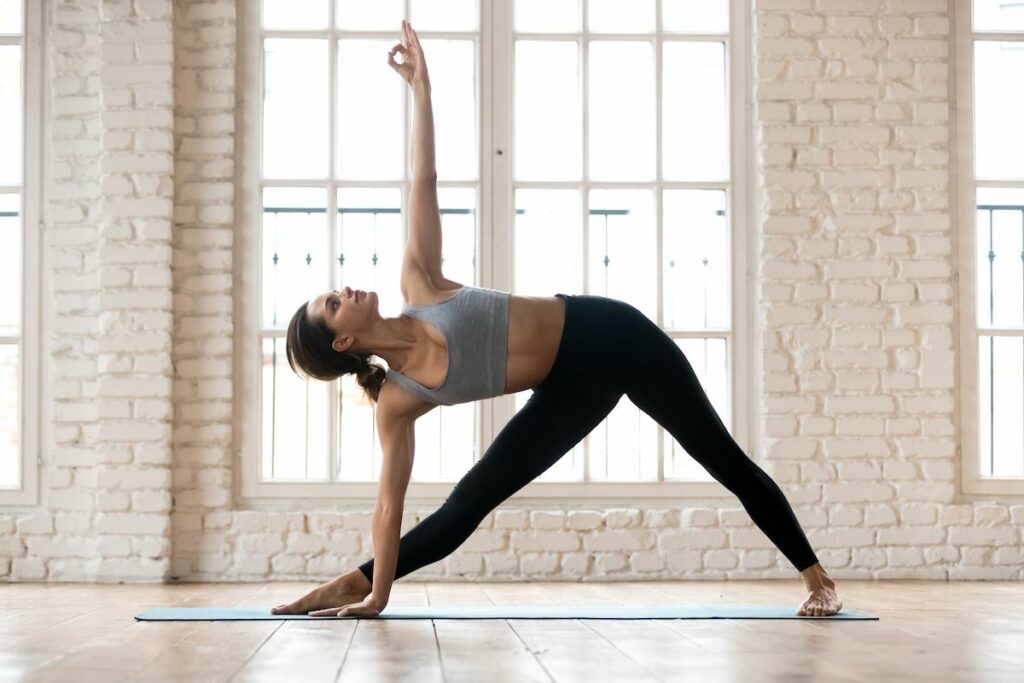
11. Warrior 3
Warrior 3 calls for strong stability as you balance all your weight on one leg. To do this, all your core muscles activate along with the muscles in your legs and feet. This large-scale muscle activation energizes the body and builds internal heat. Here’s how to do Warrior 3:
- From Mountain Pose, shift your weight into your right foot. With your hands on your hips, lift your left knee and take a moment to find your balance.
- Slowly extend the left leg behind you as you simultaneously lower your upper body, bringing both body parts into one line (this will create the shape of the letter T with your body).
- To get the full benefits from the pose, keep your back leg lifted at 90 degrees and bring your arms alongside your ears extending forwards.
- Flex your floating foot and press out to the heel as you keep your hips facing down and your core engaged.
- Hold for 5 breaths, release, and repeat on the other side.
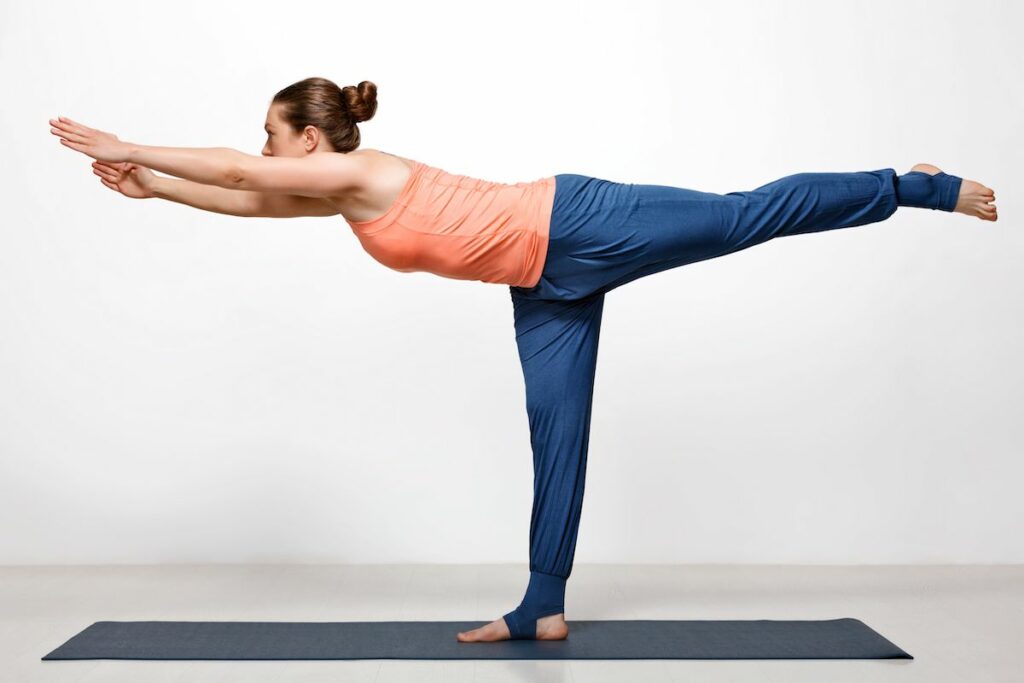
12. Chair pose
The fiery chair pose will bring sweat beads to your forehead after just a few seconds. Like Warrior 3, this vigorous asana engages many of the body's muscle groups, including the legs, back, core, and arms. Here’s how to do Chair pose:
- From Mountain Pose, bring the feet together with your body weight spread evenly between them.
- Bend your knees and sink your hips. Lower as far down as you can but ensure you can still see your toes when you look down.
- Reach your arms overhead, bringing the upper arms towards the ears. Continue to sink the hips low, but do not compromise the spine – it should stay straight and elongated.
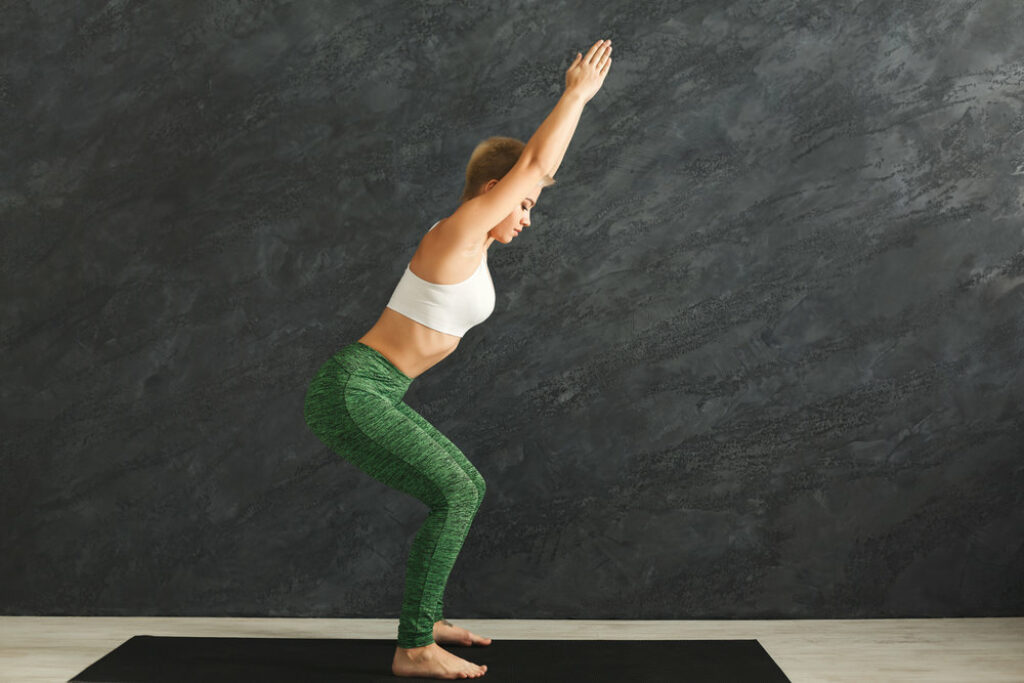
Takeaway on yoga poses to build abs and core strength
As the core consists of many different muscles, I recommend incorporating several of the above ab-strengthening yoga poses rather than just one or two. That way, you'll target all the core muscles, building a strong and healthy central body without having to hit the gym!
Other articles you might enjoy for further asana understanding
- Malasana modifications
- How to do Parsva Balasana
- Yoga stretches to tone legs
- Best yoga poses to build strong arms.
Some online yoga studios, online yoga teacher training programs, and brands that we write about may offer us a small percentage should you decide to purchase after reading our content. Thank you for enabling us to exist!


